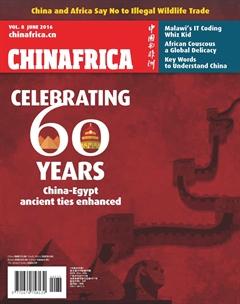A Burning Issue
By Aggrey Mutambo
IT was a bonfire like no other at the Nairobi National Park in Kenya. Watched by leaders and conservationists from around the world, President Uhuru Kenyatta and his Gabonese counterpart President Ali Bongo set alight stacks of ivories and rhino horns in a symbolic show of resolve to fight poaching. Over 100 tons of elephant tusks and 1.35 tons of rhino horns turned to ashes in the largest ivory haul ever burnt in Kenyas history. It was April 30, 4:30 p.m.
The tusks and horns came from about 8,000 animals killed by illegal ivory trade runners, just 5 percent of the total stockpile seized around the continent, according to Kenya Wildlife Service estimates.
While countries such as Tanzania and Botswana have said they will stock the seized ivory, Kenyatta said his government finds no value in ivory obtained from a dead elephant. “Ivory is worthless unless it is on a living elephant. I would rather wait for the judgment of the future generations who, I am sure, will appreciate the action we have taken,”he told the gathering before burning the piles.
Dwindling jumbos
Africas elephant population has dropped from more than 1.3 million in 1980 to just about 420,000, according to the World Wildlife Fund. In some countries where protection has been weakened by war, such as the Central African Republic, conservationists warn that the largest land mammal may be wiped out completely.
In Kenya, which is considered a smuggling conduit rather than a source, the population has dropped to 35,000 from 130,000 in the 1970s.
“It is about saving elephants in wider conservation strategy, to eliminate the demand for ivory, and put value on living elephants,” said Paula Kahumbu, CEO of Nairobi-based WildlifeDirect, a non-profit organization that campaigns against poaching, explaining why the burning was important.
Bigger picture
So, what is the wider strategy? Before the pyres were set ablaze, Kenyatta hosted a conference on protecting elephants in the resort town of Nanyuki, northwest of Nairobi.
The conference, dubbed the Giants Club, brought together leaders from around Africa, China, Europe and the United States. The discussions mainly involved modalities for establishing a network of law enforcers and total destruction of confiscated illegal wildlife products.
“We take a strong stand against illegal wildlife trade. We urgently need to work together with the international community to undertake responsibilities and meet the challenges,” Chinese President Xi Jinping said in a speech delivered on his behalf by the Chinese Ambassador to Kenya, Liu Xianfa.
Xis message demonstrated his governments determination to collaborate with the world, saying poaching affects everyone.
“In recent years, due to the rising international momentum of illegal ivory poaching and smuggling, the Chinese Government has already taken, and is still taking, a series of legal measures to combat the smuggling and illegal trade of ivory,” he said in the speech.
Those measures include working with African law enforcement agencies to crack down on smuggling rings, banning importation of ivory, supporting the Kenya Wildlife Service through a donation of $600,000, and passing new laws to strengthen punishment.
President Bongo, whose country alongside Kenya, Uganda, the Democratic Republic of the Congo and Botswana still has the largest elephant population in Africa, said many elephants are getting killed because they have become refugees who wander into homesteads. A concerted effort is the only way forward to protect the gentle giants, he said.
More effort needed
The delegates agreed that local communities must be involved for effective results.
“Without community engagement and reliance on enforcement authorities alone, it will not be possible to combat poaching,” Daniel Sopia, who chairs the Maasai Mara Wildlife Conservancies Association in Kenya, told ChinAfrica. “Communities living alongside wildlife are the eyes and ears of anti-poaching efforts because they typically have the best knowledge about who is doing the poaching.”
The association is a regional network of wildlife conservancies whose land is an integral part of the greater Maasai Mara ecosystem, considered to host a quarter of Kenyas wildlife.
According to Sopia, the problem is that a huge section of wildlife in Kenya is not in protected areas, meaning locals have to get involved to avoid human-wildlife conflict, which also results in illegal killings.

